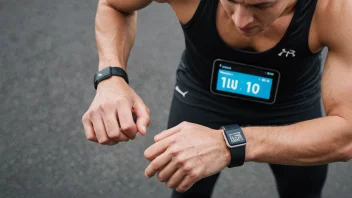In an age where technology permeates almost every aspect of our lives, the world of running has seen a remarkable transformation. From tracking our speeds and distances to monitoring our heart rates and even analyzing our running form, technology has become a vital partner for runners, both amateur and professional. This integration of technology into running not only enhances performance but also significantly contributes to improving safety and overall running experiences. Whether you’re hitting the pavement, conquering trails, or training for your next marathon, understanding how to leverage technology can help you become a better runner while keeping you safe.
Wearable Technology: Your Running Companion
One of the most significant advancements in running technology has been the rise of wearable devices, such as smartwatches, fitness trackers, and heart rate monitors. These tools enable runners to gather critical data about their performance and health. For instance, heart rate monitors can provide insights into your cardiovascular fitness, allowing you to train within optimal heart rate zones. Additionally, GPS-enabled devices can track your distance, pace, and route, helping you to adjust your training regimen accordingly.
Understanding Your Data
While data is essential, knowing how to interpret it is equally important. Most running apps and devices provide detailed analytics, including pace charts, elevation profiles, and even recovery times. By analyzing these metrics, runners can identify trends in their performance, make informed decisions about their training, and avoid overtraining, which can lead to injuries. Moreover, many devices now offer personalized training plans that adapt based on your progress and goals, making your training more efficient.
Safety Features: Running Smart
Safety is a priority for any runner, and technology plays a crucial role in ensuring that you can run safely, especially in urban environments or during low-light conditions. Some smartwatches come equipped with safety features like incident detection, which can automatically alert emergency contacts if a fall or accident occurs. This feature provides peace of mind for both runners and their families, especially when running alone.
Illumination and Visibility
In addition to smartwatches, there are various gear options designed to enhance visibility during nighttime runs. Reflective clothing, LED lights, and headlamps can significantly improve your visibility to motorists and other pedestrians. Furthermore, apps that allow you to share your location with friends or family can add an additional layer of safety, ensuring someone knows where you are while you run.
Smart Running Shoes: A New Era of Footwear
The advent of smart running shoes has also revolutionized the running experience. These shoes often come with built-in sensors that track metrics such as stride length, ground contact time, and foot strike patterns. This data can help runners improve their form, which is vital for both performance enhancement and injury prevention. Moreover, some smart shoes can connect to your mobile device, providing real-time feedback as you run, which can be invaluable for adjusting your technique on the go.
Customizable Fit and Performance
With advancements in 3D printing technology, the customization of running shoes has become more accessible. Runners can now obtain shoes that fit their unique foot shape, ensuring comfort and reducing the risk of blisters and injuries. Companies are also developing shoes that adapt to your running style, offering varying levels of cushioning and support based on your needs.
Apps for Every Runner
Mobile applications dedicated to running have proliferated, enabling runners to connect with communities, track their runs, and even participate in virtual races. These apps often provide motivational tools, such as challenges and leaderboards, to foster a sense of community and competition. Moreover, some applications offer guided runs led by professional coaches, which can be beneficial for beginners looking to build their confidence and skills.
Nutrition and Hydration Tracking
In addition to tracking performance metrics, many running apps now include features for monitoring nutrition and hydration. Proper fueling is crucial for optimal performance, and these apps can help you log your meals and hydration levels, ensuring you meet your dietary needs. Some apps even provide reminders for hydration during long runs, which can be a game-changer for maintaining endurance and energy levels.
The Future of Running Technology
The future of running technology is bright, with continuous innovations aimed at enhancing the running experience. Advancements in artificial intelligence and machine learning are enabling devices to provide even more personalized training recommendations based on your unique performance data. Additionally, virtual reality (VR) training environments are emerging, allowing runners to train in simulated conditions or participate in virtual competitions from the comfort of their homes.
Embracing Change Responsibly
As technology continues to evolve, it’s essential for runners to embrace these advancements responsibly. While technology can provide valuable insights, it’s crucial not to become overly reliant on data. Listening to your body and understanding your limits should always remain a priority, as technology is merely a tool to aid your journey, not a replacement for self-awareness.
Conclusion
In conclusion, the role of technology in enhancing running experiences cannot be overstated. From wearables that monitor your performance and safety features that keep you secure to smart shoes that adapt to your needs, technology is transforming the way we run. As runners, embracing these advancements while maintaining our awareness of our bodies will empower us to improve our performance and enjoy our running journeys safely. The future of running is exciting, and with the right tools and knowledge, we can all strive towards reaching new heights in our running endeavors.






